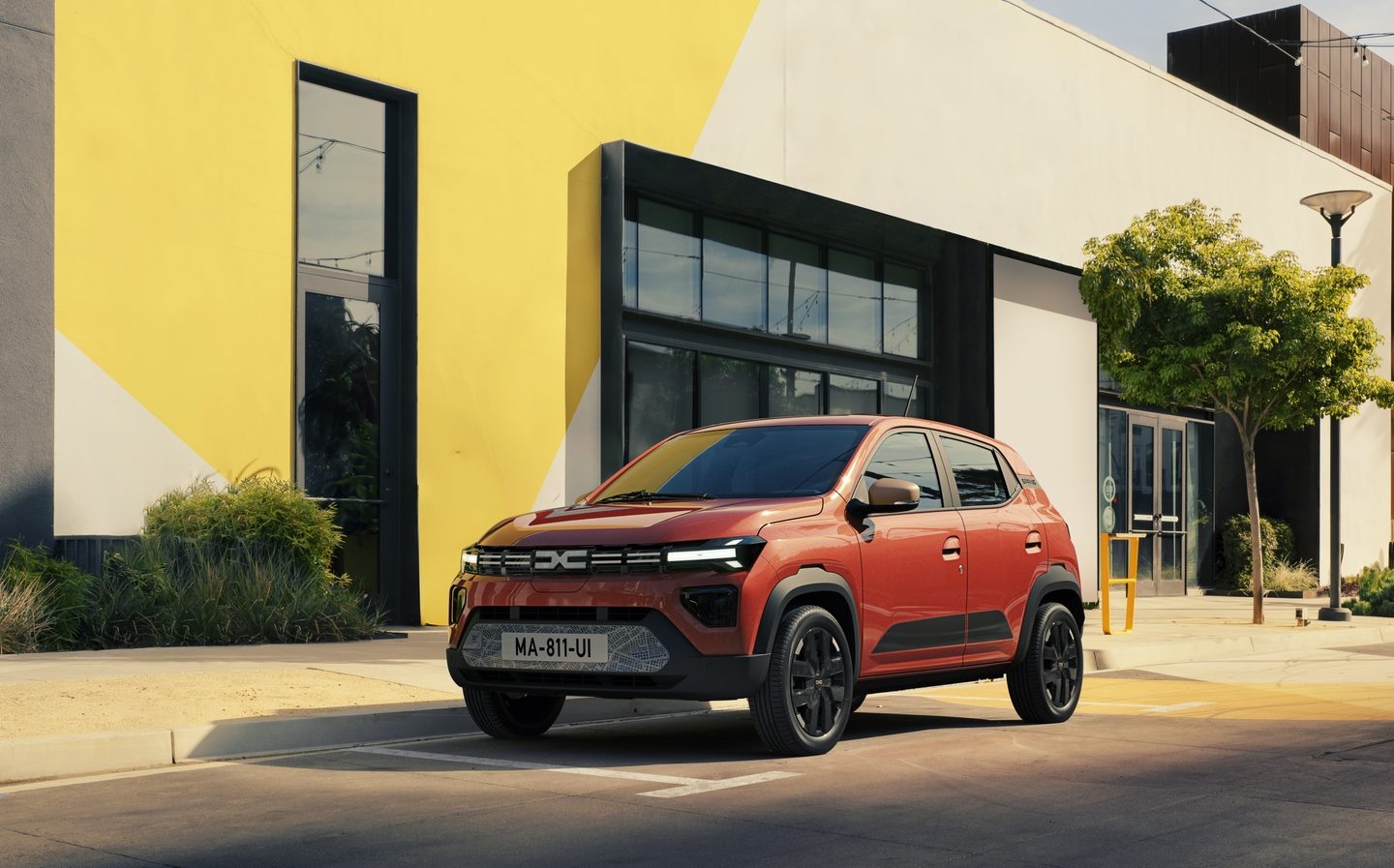Dacia Spring EV revealed for UK, though expected ultra-low price still under wraps
Dacia dealers coiled and awaiting delivery
Dacia’s first electric car, the Spring, will arrive in the UK later this year and is expected to be one of the most affordable EVs on the market — though the Romanian brand is still keeping schtum on prices for the time being.
Other details have been confirmed in the meantime, and new images have been released of the cars British buyers will be able to order from next month.
The Dacia Spring, a pure-electric compact crossover, will sit below the Sandero hatch in the line-up and compete head on with other affordable small EVs such as the BYD Dolphin and forthcoming Citroen e-C3.
Though some 140,000 buyers in left-hand-drive markets have taken delivery of the Spring since it first was launched in 2021, the model set to be introduced to the UK is a new generation of the car with a considerable suite of improvements.
Only needs a small battery
A primary objective of the Dacia Spring engineering team was to keep weight to a minimum, allowing for the use of a smaller battery and less-powerful electric motor. To that end, the Spring weighs under a metric tonne — or less than half the weight of many current EVs.
That was partly made possible by the use of a modest battery pack. At 26.8kWh, it’s smaller than you’ll find in some of the latest plug-in hybrids. Nevertheless, the Spring is officially rated at up to 137 miles on a charge of the battery, over a mix of roads, which translates into efficiency of more than 4.2 miles per kWh.
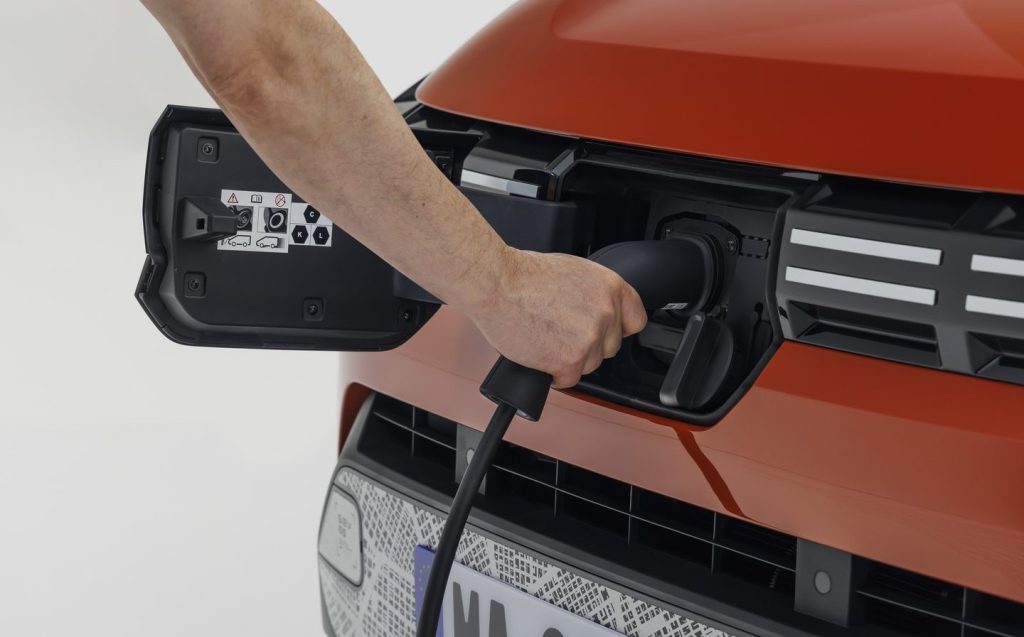
It’s possible to recharge the Spring’s battery from 20 to 80 per cent in 11 hours if you plug it into a standard domestic socket, or four hours if you plug into a 7kW AC charge home wallbox charger. Buyers expecting to rely on public DC chargers can opt for a 30kW DC upgrade, which enables a 45-minute charge to replenish the battery from 20 to 80 per cent.
While these are far from the most impressive stats, it’s intriguing that the top-of-the-range Spring will comes as standard with vehicle-to-load (V2L) capability. This enables the car to act as a high voltage power source, via an adaptor that plugs into the Spring’s charging port, for all manner of three-pin electrical appliances. It means that power washers, electric air pumps, coffee machines, electric stoves, lighting and more are all options, even when a long way from the nearest mains plug socket. Even some luxury electric cars are not sold with V2L capability at present.
Small in other areas, including performance
The Spring won’t owners anywhere very quickly, though, as it comes with a choice of 45hp or 65hp electric motors driving the front wheels. At urban speeds it should feel sprightly enough thanks to the instant-torque characteristics of electric motors but the official 0-62mph time of 14 seconds is modest at best; and that’s for the more powerful model.
In terms of practicality, although the Spring apes the new Dacia Duster in terms of its frontal styling, it’s a much smaller car. Indeed, at 3.7 metres long it’s shorter than the Dacia Sandero hatchback, though despite it diminutive proportions still comes with a set of rear doors for easier access.
If thought of in terms of a city car, the Dacia Spring’s boot is usefully sized, holding 308 litres with the rear seats in use. That’s a lot handier than the Kia Picanto, for example, with its capacity of 255 litres. Fold the Spring’s rear seats and the space opens up to 1,004 litres.
There’s extra storage room under the bonnet, too, though buyers will need to pay extra for a plastic insert that makes it a usable 30-litre space.
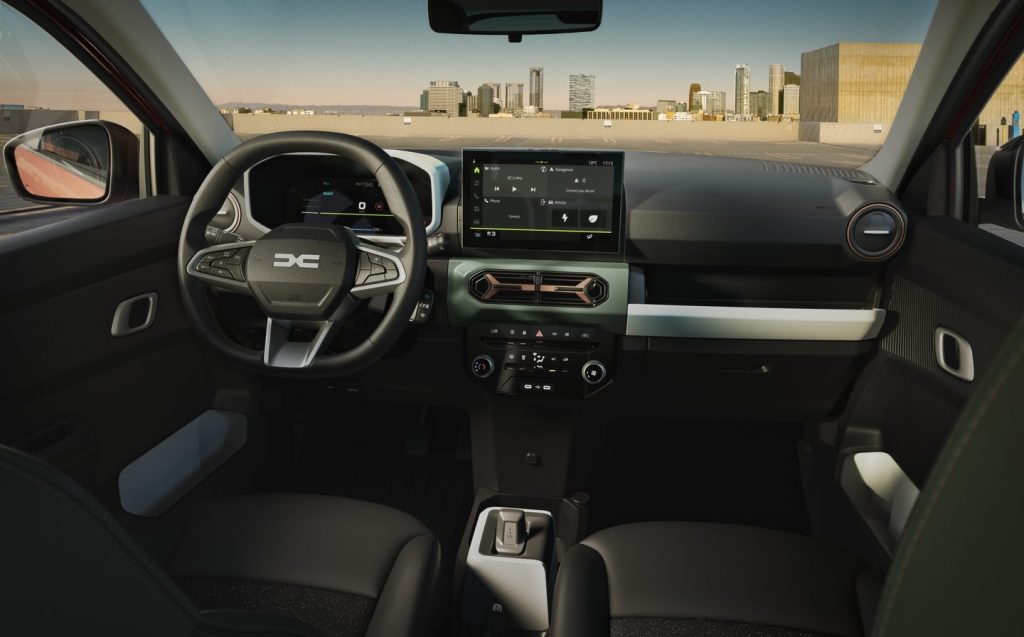
Dacia is particularly proud of the amount of cubby space it has managed to carve out of the cabin, too.
Inside is perhaps where it’s most obvious that the Spring has been built to a price, with hard plastics throughout and limited adjustment of the driver’s seating position.
It will come with plenty of equipment as standard, however, and optional accessories offered to enhance its practicality. Most of these make use of the integrated “YouClip” mounting system — first seen on the new Duster — and include a removable storage bag, cupholders, extra lights and a smartphone holder with inductive charging built in.
No alloys available
Unlike the first Dacia models that arrived in the UK just a decade ago, the Spring isn’t available with exposed steel wheels, as plastic trims are always fitted to the modest 15in rims. However, Dacia hasn’t turned into a spendthrift overnight because alloy wheels are not available for the Spring.
In some markets, there’s a basic model offered called the Essential, with smaller wheels and without the contrast-colour bumpers, though it’s expected that UK buyers will have to choose between the higher-spec Expression and Extreme cars only, as very few Brits ever bought the absolute lowest trim level Dacias in the past.
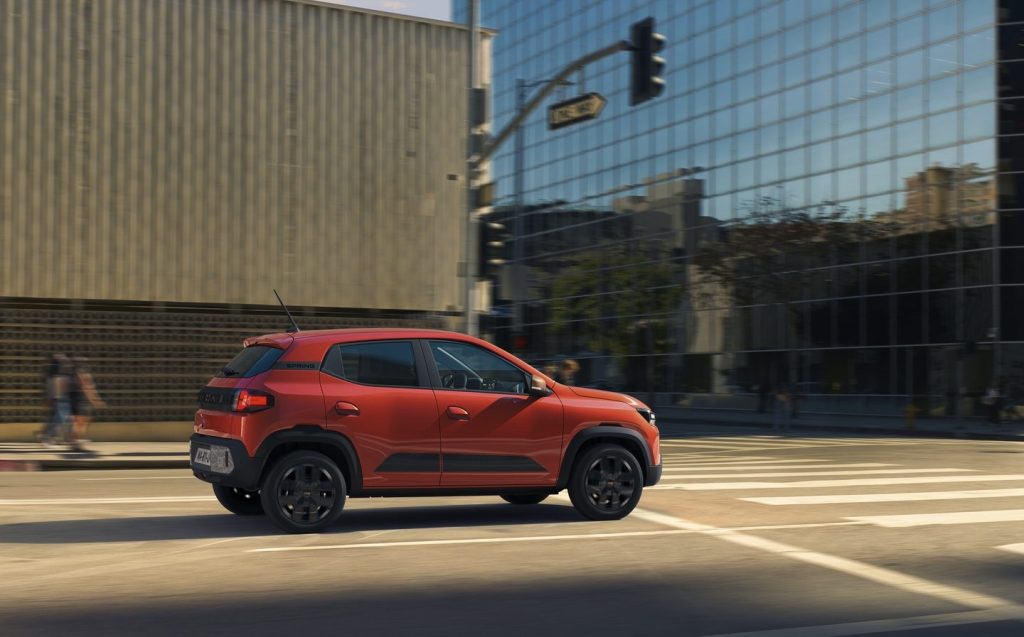
The Expression comes with air conditioning, electric front windows, digital instrumentation measuring seven inches across the diagonal, rear parking sensors, remote central locking and even cruise control with a speed-limit function.
When it comes to safety, the Spring also gets an automatic emergency braking system, traffic sign recognition and speed alert, lane keep assistance, driver attention warning and more.
As standard, the Spring doesn’t get a central touchscreen, but instead a mount designed to hold a smartphone, which can be used for the car’s infotainment system in conjunction with a free app and integrated USB port.
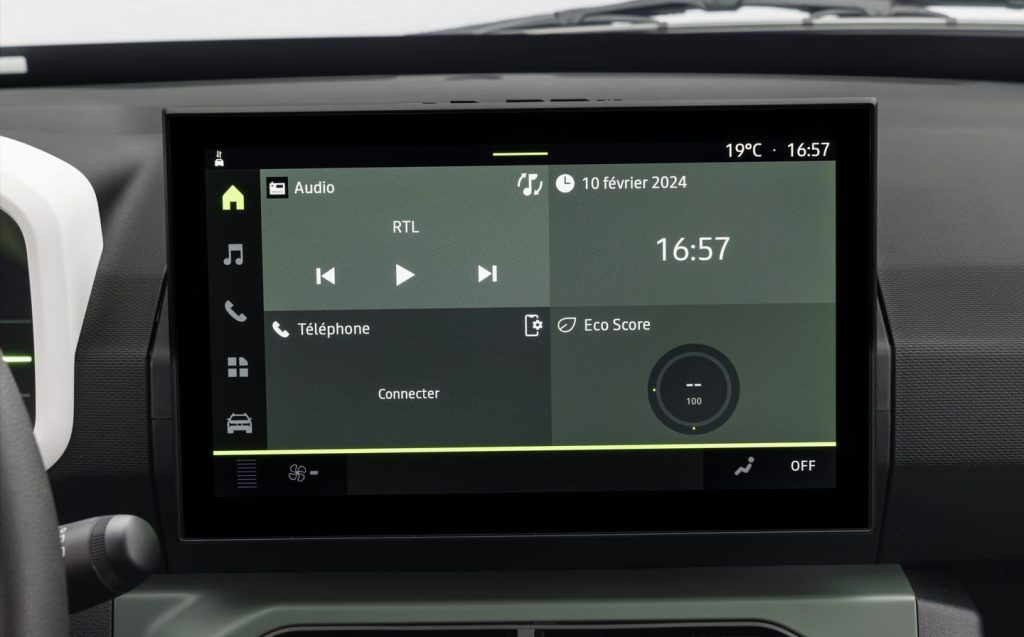
Upgrade to the Extreme model and this is replaced by a 10in touchscreen, bringing with it wireless Apple CarPlay and Android Auto, two USB ports and eight years of connectivity updates.
The Extreme gets rear electric windows, too, along with unique colour accents for the air vents and upholstery. This extends to the exterior, where it can be identified by black wheel trims and copper-coloured door mirror caps.
The finalised UK line-up, specifications and pricing will be announced in March, with first deliveries begin in October this year.
Related articles
- After reading about the new Dacia Spring EV, you might also like to read about the new Dacia Duster, redesigned for 2024 with rugged look and first use of hybrid power
- Thinking of getting behind the wheel of a new vehicle this year, as a private or company car driver? Check out 11 of the most exciting new models arriving in 2024
- Did you know there are now nearly 350,000 privately owned electric cars now on UK roads?
Latest articles
- Aston Martin Valkyrie AMR-LMH hypercar hits track ahead of 2025 Le Mans challenge
- Porsche has begun testing the electric Cayenne
- Cupra Leon 272 eHybrid 2024 review: Bigger battery, better tech … but is it a Cupra?
- Porsche 911 GTS 2024 review: Hybrid heresy or more Stuttgart genius?
- Extended test: 2023 Vauxhall Astra Sports Tourer GS PHEV
- Ford Capri revival has faced a lot of flak… but are buyers put off? Here’s what visitors to the Festival of Speed had to say
- F1 2024 calendar and race reports: What time the next grand prix starts and what happened in the previous rounds
- ‘No timeframe’ for how long Volvo’s returning estate cars will be on sale in UK
- Kia Picanto 2024 review: Updates add spice to cute Korean city car


